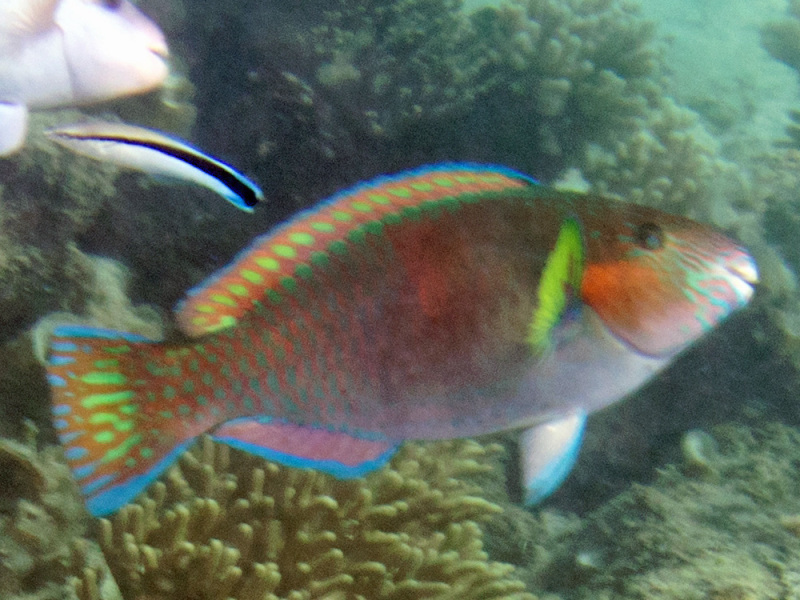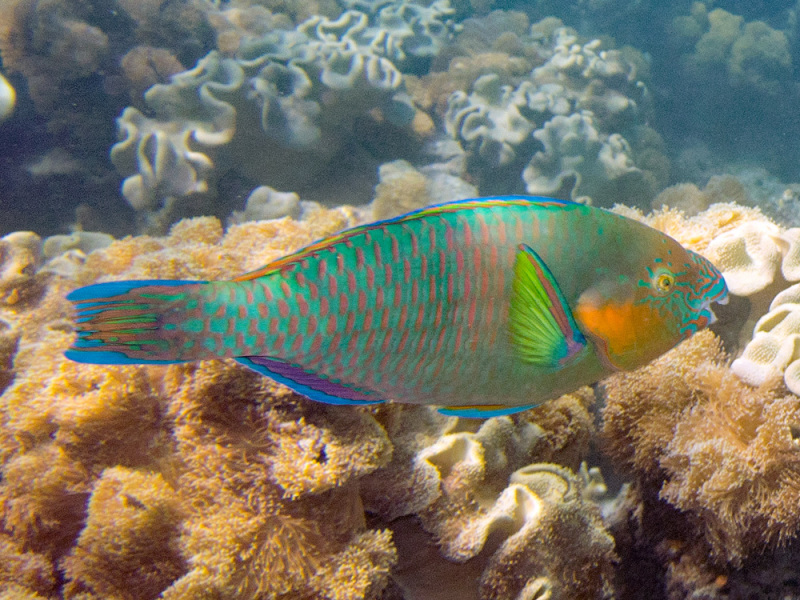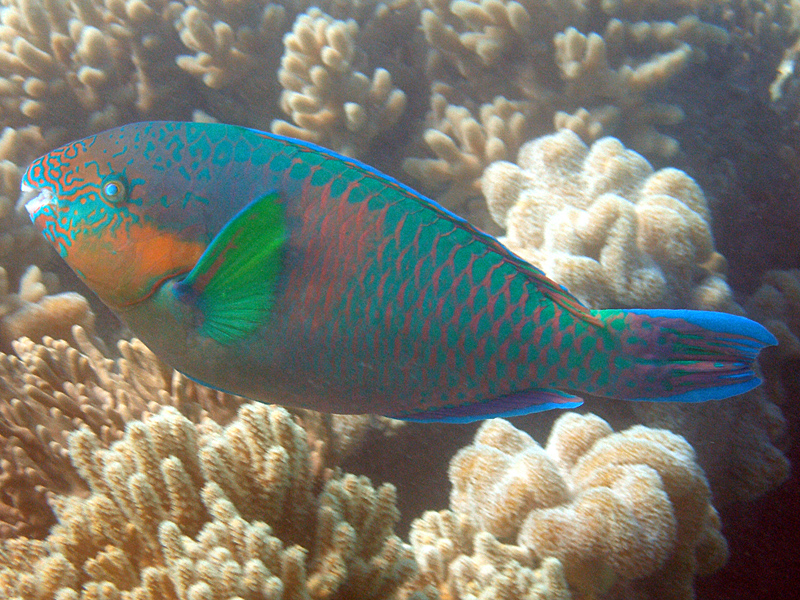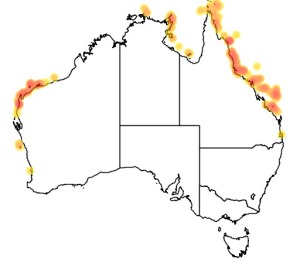
©Paul Asman: Terminal phase Scarus rivulatus at Anchor Bay, Lizard Island. Thanks to Prof. Kendall Clements (University of Auckland) for confirming the id.
Colours
Distinguishing features
A small to medium sized parrotfish. The terminal phase male is brightly coloured, with a generally green body with red scale margins, a distinct orange cheek patch, and lime green pectoral fins. Males involved in courting activities develop a distinct dark front / light rear colouration. Initial phase fish are light brown with slightly darker scale margins and often a light blue eye, and can be hard to distinguish from IP S. psittacus, S. globiceps, and S. chameleon.
Size
- Up to 40 cm (Standard length)
Depth range
- Depth range data is not yet available.
Synonyms
Distribution
Distribution and habitat preferences
Found in nearly all habitats, although favours shallow areas with plentiful rubble, such as reef flats, lagoons and backreef patches.
Found in most locations around the Island.
Local abundance
- Lizard Island: This is the most abundant parrotfish within the Lizard Island Group. It is extremely uncommon on outer reefs in the area. Information provided by Howard Choat, 2016.
Behaviour
The Surf Parrotfish is one of the most common scarids at Lizard island. Juvenile and initial phase fish are usually seen in mixed schools with other pale brown scarid IP fishes such as S. chameleon and S. psittacus, and terminal males will join these schools once the component fishes reach a large size. Males are sometimes also seen in single sex schools. This species feeds on benthic turf algae in areas of coral rubble so is mainly found in shallow lagoonal areas. This species is quite short lived, only reaching 8 years of age around Lizard Island.
Web resources
References
References that assist with identification
- Bellwood, D.R. and J.H. Choat (1989). A description of the juvenile phase colour patterns of 24 parrotfish species (Family Scaridae) from the Great Barrier Reef, Australia, Records of the Australian Museum, 41: 1-41. LIRS catalog number 264.
Other references
- Bellwood, D.R. (1985). The functional morphology, systematics and behavioural ecology of parrotfishes (Family Scaridae), Ph.D. thesis, James Cook University, Townsville. LIRS catalog number 310.
- Bellwood, D.R. and J.H. Choat (1990). A functional analysis of grazing in parrotfishes (family Scaridae): the ecological implications, Environmental Biology of Fishes, 28: 189-214. LIRS catalog number 305.
- View all references








